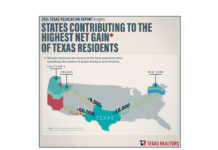Despite Some Gains, 25% of Texas Kids Live in Poverty
New report finds expanded Pre-K, health care coverage among policy solutions that could help make Texas the #1 state for kids
AUSTIN, Texas, March 4, 2015 /PRNewswire-HISPANIC PR WIRE/ — One in four Texas children lives in poverty, threatening their potential and the state’s continued prosperity. According to State of Texas Children 2015, a new Center for Public Policy Priorities (CPPP) report released today, slight improvements in health care and school nutrition don’t compensate for inadequate investments in education and child protection.
Detailed data are available for every county in Texas. Please contact Bernstein@cppp.org for child well-being data for your county.
“Texas is consistently ranked one of the nation’s worst states for children, but we can make our state the best place for kids if we enact smart public policies now,” said Ann Beeson, Executive Director of CPPP. “With 1 in 11 U.S. kids living in Texas, the future of young Texans will determine the future of our country.”
Key findings include:
- One in four Texas children lives in poverty. For a family of four, that’s less than $24,000 per year. The high child poverty rate combined with a relatively good parental employment rate means that many hard-working Texas parents aren’t earning enough to provide adequately for their kids.
- Despite modest gains for kids, Texas is ranked 49th for the percentage of children with health insurance (13 percent uninsured). Kids are more likely to be uninsured when their parents are uninsured, and Texas continues to have the highest rate of uninsured adults in the nation.
- Nearly two million Texas kids live in households where access to nutritious food is limited and uncertain, threating children’s health and ability to learn. Expanded school nutrition programs have successfully provided more meals to students, keeping kids healthier and helping them learn.
Key policy recommendations:
- Invest sufficiently in public education to meet student needs.
- Expand Pre-K statewide to high quality, full-day programs for currently eligible students.
- Close the Coverage Gap and expand health insurance coverage options for families.
- Provide more support for informal kinship caregivers, and streamline the process for accessing kinship care benefits.
- Raise the state minimum wage and change the state law that prohibits Texas cities from setting their own minimum wage.
Lawmakers have a tremendous opportunity this legislative session to adopt policy solutions that can help children and all Texans. From expanded early childhood education to health insurance coverage that protects children and families, policy solutions are available to lawmakers now that can improve the state for Texas children.
“The decisions legislators make at the Capitol have major implications for our children,” said Jennifer Lee, Research Associate at CPPP and the lead author of State of Texas Children 2015. “It’s time for all of us to stand up for Texas kids.”
State of Texas Children 2015 is part of Texas Kids Count, a project of the Center for Public Policy Priorities, and is supported by the Annie E. Casey Foundation and Methodist Healthcare Ministries of South Texas. The report was released at a breakfast presentation in Austin today with over 300 child advocates, policy makers and concerned Texans. To watch a livestream or recorded video of the report presentation visit http://nowcastsa.com/blogs/webcast-state-texas-children-2015. To read the full report, visit http://www.forabettertexas.org/images/KC_2015_SOTCreport_web.pdf.






